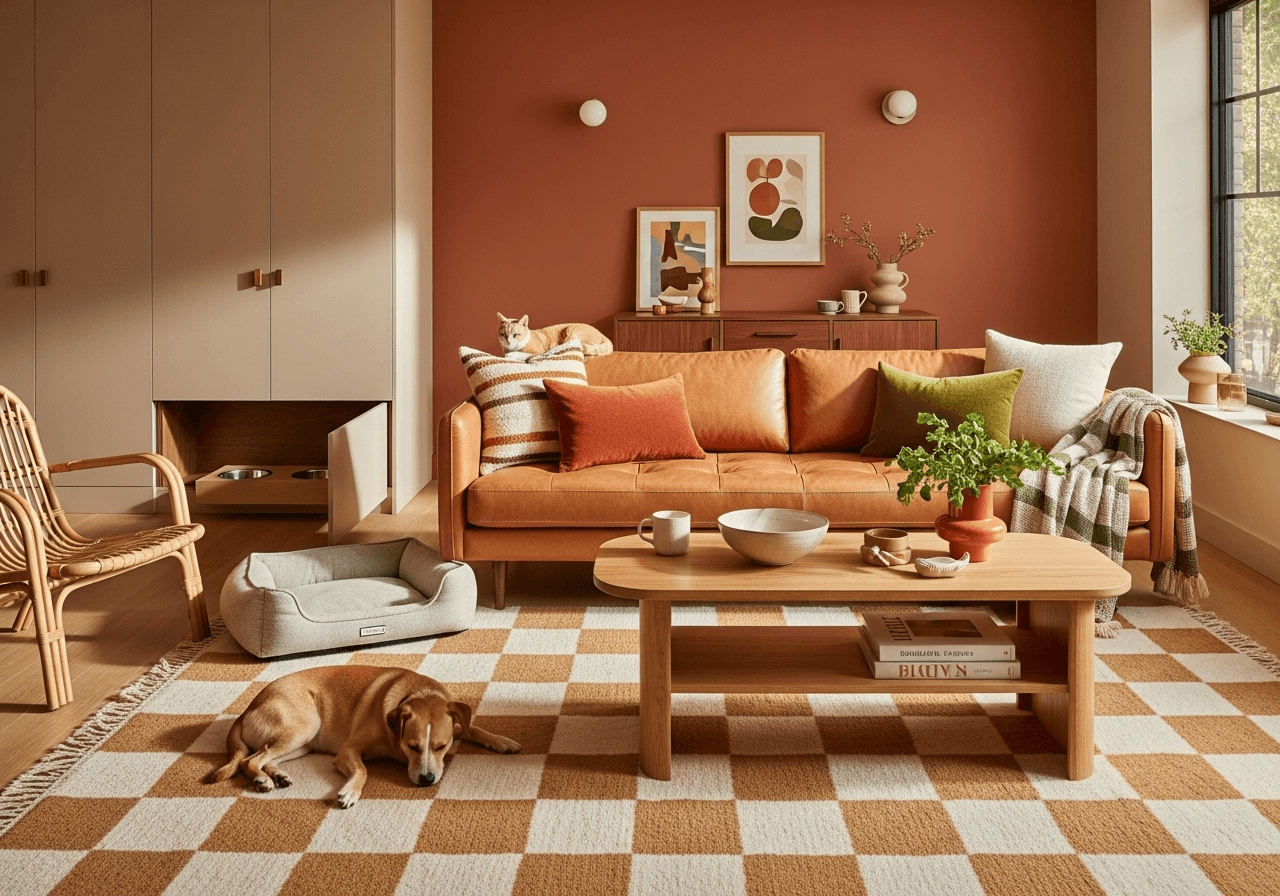Why More Realtors Are Now Using Virtual Staging
Homebuyers rarely see the potential of a home if it’s not staged. They can’t envision themselves living in it, which makes it difficult for agents to convince them to buy the property.
On the other hand, staged homes sell both faster and for a higher price. When buyers get inspired by the interior and see what the home can become, it’s easier for them to reach into their pockets and make the deal.
While traditional staging takes time and money to do, virtual staging has recently entered the game and made it easier for real estate agents and interior designers to show a home’s potential. For a fraction of the actual home staging cost, interior designers and real estate agents can now inspire buyers and help them emotionally connect to the property.
What is virtual staging?
Virtual staging software allows interior designers to stage a home remotely by using a graphic editor. The process starts with taking digital photos of the space – it can be empty or with elements that will later be removed. The virtual stager then uses photo-editing and retouching software to edit and add features to the space in the photo that brings out the best of a home. The elements added can be anything from beds and cupboards to decorations and art pieces.
While editing and recreating each space, the stager makes sure to mind the size of the original room so that the final photo matches the actual look of the home.

However, virtual staging isn’t just about making the interior of the home look better. It’s also a tool for home stagers and real estate agents to help buyers see how they can utilize the space to match their lifestyles.
Why is virtual staging important to the future of real estate?
With the pandemic, virtual staging has become more critical than ever in real estate. How people interact, spend time together, and even do business has completely been overhauled, and real estate is one of the industries that took the biggest hit.
Because of social distancing regulations, home showings stopped being an option, so the way people shop for properties and how agents are buying and selling homes has completely changed.
As brokerages, agents, and home stagers rethink their business approach, virtual staging apps and software has become more popular than ever. Interior designers don’t have to go to the property to stage it anymore. All they need is graphic software and a few photos of the property with dimensions, and they’re all set. They’ll stage the home using the software and prepare it for the virtual tours agents will host.
And with virtual tours, prospective buyers are no longer required to drive around neighborhoods looking for yard signs just to find suitable properties. All they need now is a smart device and access to the Internet to see a virtual tour of a property that is currently for sale.
Since buyers won’t physically see the property, sellers can use a virtual staging app to help buyers see how the property looks and how the various spaces in the home can be furnished and used. This makes it a win-win situation for buyers, sellers, and home stagers as it eliminates the stress of a physical appointment but still allows all three parties to do their work.
This is why most professionals believe that virtual staging will remain the new normal as home stagers and buyers embrace this new trend.
Key benefits of virtual staging
Virtual staging and virtual home tours are a win-win situation for all three parties involved in the home-buying process. It benefits everyone because of a few reasons.
1. Staged homes sell faster
It’s a fact that staged homes sell faster. According to the National Association of Realtors, up to 81% of potential buyers find it easier to imagine themselves living in a home when it is staged. Once buyers can imagine themselves living in a property comfortably, they get emotionally attached to that unit and spend less time mulling over a buying decision.

And thanks to virtual staging, home staging is easier than ever. Interior designers can pick any color, furniture, or design they believe would suit the space best without worrying about doing the heavy lifting or investing thousands of dollars in the process. Whether you’re showing off a fabulous kitchen design or putting emphasis on the bathroom layout, a virtual staging app can bring the potential of a home to life for a prospective buyer.
2. Stress-free preview
One of the best parts of virtual staging is the seamless approach involved in the whole process. Real estate agents and homeowners aren’t required to keep appointments with the designer. The designer isn’t required to spend days in the home planning and staging it. No one even has to waste time or money buying a piece of furniture just to see how it would look in a room.

Everything is designed, staged, and presented virtually through 3D models that replicate how a room would look when all the additions and modifications are included. No one has to bother visiting an interior design studio, sorting through a swathe of material, or visiting a showroom just to be sure that the color they chose fits the room.
3. Create multiple designs
With traditional home staging, the choices are limited. You can only test one type of design, and if it doesn’t attract the kind of buyers you want or the price you want, there’s not much you can do about it.
However, with virtual staging software, you can try out as many designs as you want. It only takes a few clicks to recreate or change a piece of furniture, a color, or a decoration, so if something is not working, you can easily change it. You won’t have to bother scheduling an appointment to have it done. The designer can recreate whatever you want and send over the new design in a matter of hours.



It’s that simple, which is important because there are many ways to lose a sale just based on bad design. Bulky furniture, bad lighting, and outdated appliances are almost always a point of concern for potential buyers. However, that can all be changed with virtual staging. Want to brush up on the best staging techniques for realtors? There is a lot of great information about how real estate agents can work with designers to create the perfect staging via leading industry sites like the National Association of Realtors and AgentAdvice.com.
4. Virtual staging is less expensive
Virtual staging costs up to 97% less than actual home staging. How is that possible?
Well, virtual stagers aren’t required to work with physical materials or travel back and forth from the shops to the home several times per day, which allows them to work more efficiently and spend less at the same time.
This is not the case with traditional home staging. With it, a home stager has to come to the property (which can sometimes be miles away), plan out the design, and then start putting the pieces together. This requires buying the planned pieces, bringing them to the property location, paying the installation fees for some, and then a home stager has to come and organize everything as they planned it.
5. Target specific markets with different designs
Virtual staging makes it easier to target specific markets by customizing the space to match individual lifestyles or designs.
For instance, if you’re targeting millennials, you can stage the home using features, colors, designs, furniture, and even appliances that are trending on the marketplace. Or, if you’re staging a home in an upscale neighborhood, you can add luxury features that appeal to the type of buyers in that specific location.
If the market desires change while the property is listed, you can always change it. It won’t cost much but will make your listing more appealing to the precise buyers you intend to attract.
To Sum It Up: Using A Virtual Staging App Is Effective and Efficient
Virtual staging helps create realistic versions of a space or room to help potential buyers see how to make the most of the area. It’s cheaper, easier, and faster to create, but all the changes can be easily reversed and updated, allowing interior designers and real estate agents to sell the property faster and easier.
Moreover, virtual staging is safe for both buyers and sellers as it eliminates the risk of COVID-19 through physical contact or even social distance. It’s a safer and more efficient way to promote a property while minding the health of everyone involved in the process.
Meet The Author
This article was contributed by AgentAdvice. The AgentAdvice editorial team has curated the advice of thousands of real estate professionals, with a laser focus on helping make agents more effective. Agent Advice members provide you with honest, in-depth reviews on the current real estate landscape, including real estate brokerages, buyer/seller leads, and real estate technology & tools.










 20h left
20h left




